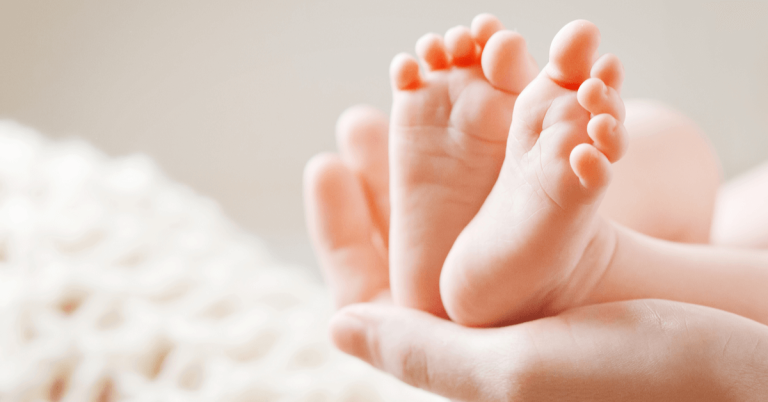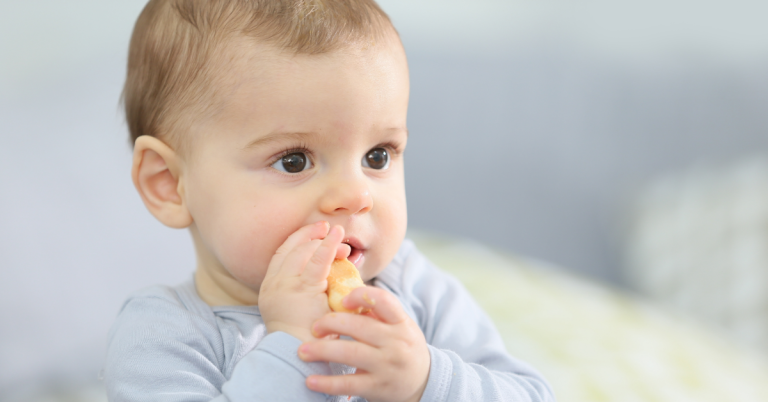Newborn reflexes for babies have an important place in terms of adapting to life. These reflexes are involuntary motor skills that develop over time. After birth, babies begin to adapt to the world they have just met with automatic movements, which is also a self-protection state. Of course, some of these reflexes lose their properties as children start to grow up. One of them is Babinski. So what is the Babinski reflex in babies? Let us consider this involuntary movement in all its details.
What is Babinski Reflex?
When you tap your baby’s soles lightly, you will see that the big toe extends upwards and the other toes protrude. This phenomenon is called the Babinski or plantar reflex in infants. This sign, which emerged with the neurologist Joseph Babinski’s first description of the reflex in 1896, is a common part of both newborn and infant examinations and controls.
This involuntary movement is a reflex that continues until approximately two years of age in infants. To know the neurological responses of the baby’s brain and nervous system functions, the doctors stimulate the bottom of the feet with a pencil-like drawing and observe and control the foot movements that may occur. With this reflex, the big toe bends outwards, and the other toes take shape by separating them.
When Does Babinski Reflex Appear in Babies and When Does It Disappear?
This involuntary movement is seen in babies younger than two years old. The thumb lifts, and the other toes are spread apart when lightly touched from the heel to the toes. It can take exactly the view of a fan. This reflex is a very important movement for the baby’s first steps, and it is also an indicator of the harmony between the lower hip limbs and the spine.
Babinski often continues until babies are 12 months old. After the age of 1, it can also be rarely seen in some babies. It is natural for this reflex to be visible until the age of 2 years. However, the important thing is that it completely disappears and is not seen after this age.
Why and How Is the Babinski Reflex Tested?
The fact that plantar is not observed at all in infants may raise suspicion of a disturbance in the central nervous system or spinal cord. In babies over the age of 2, it is beneficial to consult a specialist doctor since the continuation of Babinski may lead to neurological problems.
To test this reflex, the doctor gently draws an object from the sole of the baby’s feet to the toes. You can easily do this test at home. To do this, press the sole of the baby’s feet and notice if he moves his toes.
Abnormal Conditions in Babinski Reflex
Children older than two years and adults with planetary may have a condition in their central nervous system. Some of the possible abnormal disturbances indicated by a persistent plantar reflex may include:
- Brain tumour or brain injury
- Meningitis
- Lou Gehrig’s disease
- Multiple sclerosis
- Spinal cord injury
- Spinal cord tumour
- Paralysis
Other Reflexes That Can Be Tested Alongside the Babinski Reflex
Search Reflex
It is an involuntary movement related to feeding. When the baby’s cheek or corner of the mouth is touched, the baby will move his head towards the stimulus. This reflex helps grasp the breast or bottle. This reflex is vital for babies. If the search lasts longer than seven months, it may signify that the baby has a health problem. Therefore, it would be useful to consult a doctor. It can also be perilous if this movement is never seen in children.
Moro Reflex
This movement is often called a startle or jump. Anywhere, a sudden loud sound can cause the baby to startle and cry by raising his arms and legs in the air. Responses to sudden movements or falling, along with loud noise, are examples of more. This reflex starts in the womb, and the baby’s instinct of self-preservation and discovery are important steps of the Moro reflex. However, not responding to these sudden sounds may be an indication that there may be hearing problems.
Step Reflex
With the baby being held firmly on the ground, taking a few steps at that moment means the stepping reflex. This involuntary movement does not give a concrete idea that the child will walk early or late.
Fencing Reflex
It’s also called tonic neck reflex. As the baby turns his head to either side, the arm in the flipped direction extends, and the other arm is bent upwards at the elbow. Infants without tonic neck reflex may have spinal cord injury. Therefore, early diagnosis and treatment is very important here.
Suction Reflex
It is an involuntary movement that helps the baby feed. The breast, bottle, pacifier or finger sucking reflex brought to the baby’s mouth gives rise to the reflex. The baby acquires this reflex while still in the womb. The sucking reflex helps with feeding, strengthens the bond between mother and baby, and helps the baby feel comfortable. Seeing this reflex for a long time or not being seen at all in babies may invite some neurological disorders. Of course, the important thing here is early diagnosis.
Grasping Reflex
When the baby’s palm is touched, his fingers can curl up and grasp your hand or any object. This reflex occurs instinctively in infants and then continues as controlled behaviours and actions. With a decrease in grip, even more, advanced skills are manifested.
Reflexes When do they disappear
Search 3-4. Months
Suction 2-4. Months
Moro 4-6. Months
Fencing 5-7. Months
Grip 5-6. Months
Step 2. Months
Babinski 12. Months
Babinski reflex or other reflexes in babies give a lot of information about their healthy growth and development and guide their parents. Based on this information, you can observe your newborn’s involuntary movements. Sometimes, when babies are tired or hungry, they may not be able to respond to movements. When faced with such a situation, one should remain calm and patient. With different methods, the baby’s reflexes should be tested. If your baby does not respond in any way to your movements, you should consult a doctor.
Would you like to share your experiences and questions as a comment?
Have a nice and healthy day!







